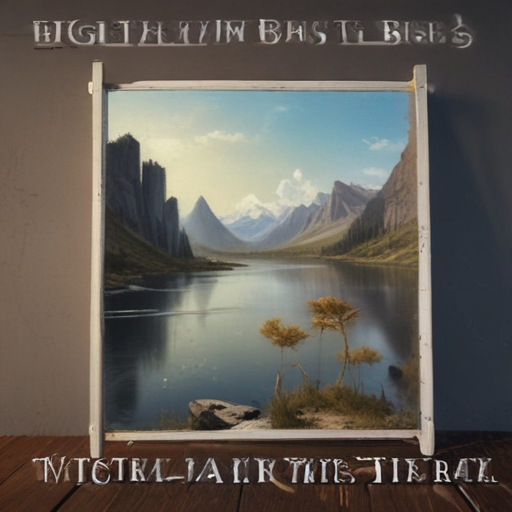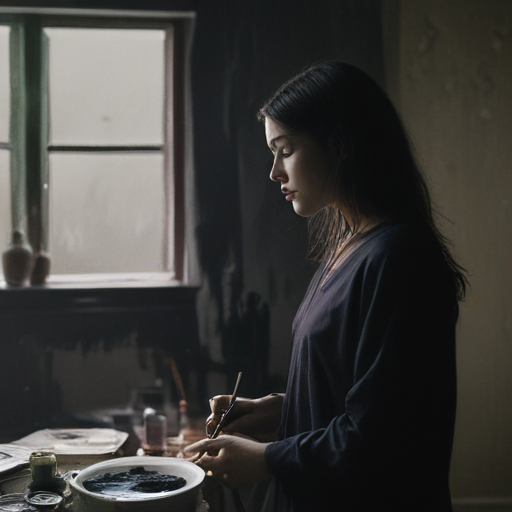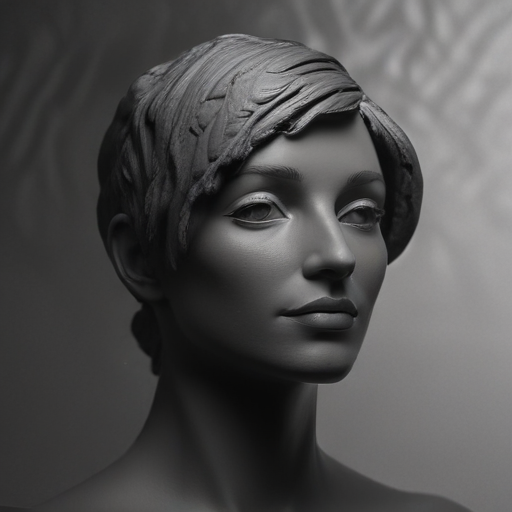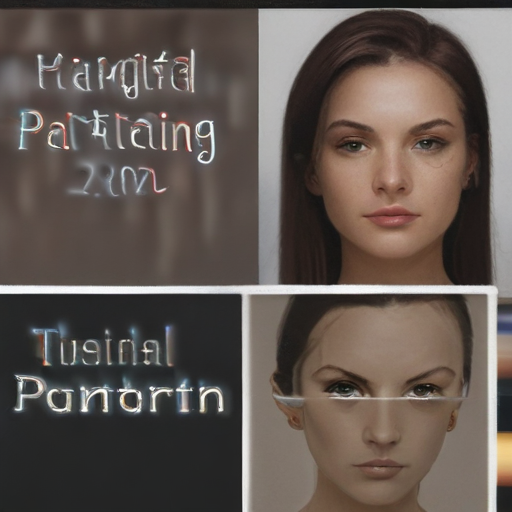Digital Painting Tutorial
Welcome to the fascinating world of digital painting! Whether you’re an aspiring artist or a seasoned pro, this tutorial will guide you through the basics and help you unlock your creativity. With just a few strokes of your digital brush, you have the power to bring stunning landscapes, captivating characters, and vibrant scenes to life on your screen.
Digital painting offers endless possibilities and incredible flexibility. From creating bold and vibrant illustrations to rendering intricate details with precision, this art form allows artists to push their boundaries and explore new horizons. So grab your stylus, fire up your favorite software, and let’s dive into the wonderful realm of digital painting!
Digital Painting Basics

Getting started with digital painting may seem intimidating, but fear not! Once you familiarize yourself with the basic tools and techniques, you’ll be well on your way to creating stunning masterpieces.
First things first, make sure you have the necessary hardware and software. A graphics tablet or a touch-sensitive screen is essential for precise brush control. As for software, there are plenty of options available such as Adobe Photoshop, Corel Painter, or Procreate.
Next, it’s time to choose your brushes. Digital painting offers an array of brush types that mimic traditional art mediums like oil paints or watercolors. Experiment with different brushes to find ones that suit your style and desired effects.
Understanding layers is crucial in digital painting. Layers allow you to work on different elements separately while maintaining flexibility and making adjustments easily. Use multiple layers for backgrounds, subjects, shadows, highlights – whatever helps organize your artwork effectively.
Color selection plays a vital role in creating mood and atmosphere in your paintings. Familiarize yourself with color theory principles such as complementary colors or warm/cool palettes to enhance the overall look of your artwork.
Practice makes perfect! Don’t be discouraged if your initial attempts don’t meet your expectations – every stroke takes you one step closer to mastering this art form. Embrace experimentation and keep refining your skills through dedication and persistence.
Now that we’ve covered the basics let’s move on to some exciting techniques that will elevate your digital paintings even further!
Painting with Light

When it comes to digital painting, understanding how to paint with light is crucial. Light plays a vital role in creating depth, dimension, and atmosphere in your artwork. It can enhance the mood and bring focus to specific elements within your composition.
One technique for painting with light is to start with a base layer of mid-tones. This will act as the establishment for your craftsmanship. Then, using a lighter color or brush opacity, you can begin adding highlights where the light source hits your subject. Pay attention to how the light interacts with different surfaces and objects – this will help create realistic lighting effects.
Another way to incorporate light into your digital paintings is through contrast. By juxtaposing areas of intense brightness against darker tones or shadows, you can create visual interest and make certain elements stand out.
Don’t be afraid to experiment with different brushes and blending modes when painting with light. A soft brush can help achieve subtle transitions between colors while overlay or screen blending modes can add luminosity to certain areas.
Remember that practice makes perfect when it comes to mastering the art of painting with light digitally. Take inspiration from real-life references or study works by other artists who excel in capturing realistic lighting effects.
By honing your skills in this aspect of digital painting, you’ll be able to breathe life into your artworks and captivate viewers through stunning illumination techniques
Painting with Dark

When it comes to digital painting, mastering the use of dark tones is crucial for creating depth and adding drama to your artwork. While light may draw attention, darkness has its own allure that can captivate viewers.
One technique for painting with dark tones is building up layers of shadow. Start by blocking in the basic shapes and forms of your composition using a mid-tone color. Then, gradually add darker shades to areas where shadows would naturally fall. This gradual layering creates depth and dimension in your artwork.
Another approach is playing with contrast between light and dark areas. By juxtaposing bright highlights against deep shadows, you can create a striking visual impact that draws the viewer’s eye to specific focal points within your painting.
Experimenting with different brush strokes and textures can also enhance the effect of darkness in your digital paintings. Use rougher brushes or add texture overlays to mimic the look of traditional media like charcoal or ink, giving your artwork a raw and expressive quality.
Don’t be afraid to let some parts of your composition remain in shadow or even completely blacked out. This negative space can create mystery and intrigue within your artwork while allowing other elements to shine brighter.
In conclusion (as requested), understanding how to effectively paint with dark tones is an essential skill for any digital artist looking to bring depth and drama into their work. With practice and experimentation, you’ll discover new ways to harness the power of darkness in creating captivating compositions that leave a lasting impression on viewers
Creating Depth with Shadows

Shadows play a crucial role in creating depth and dimension in digital paintings. They add realism and make objects appear three-dimensional on a two-dimensional canvas. Mastering the art of using shadows can take your digital painting skills to the next level.
To create depth with shadows, start by understanding how light interacts with objects. Imagine a light source casting its rays onto an object. The areas that are directly hit by the light will be brighter, while those away from the light will have varying degrees of darkness.
By carefully observing real-life references or studying photographs, you can learn how different objects cast shadows based on their shape, texture, and placement in relation to the light source. Experimenting with various brush techniques and layer settings will help you achieve realistic shadow effects.
Remember that shadows aren’t just black or gray blobs; they have nuances of color as well. Depending on the lighting conditions, you may notice warm tones in some areas and cool tones in others.
To create convincing depth, vary your shadow intensity according to distance from the light source. Objects closer to the source will have sharper and darker shadows compared to those farther away.
Don’t be afraid to experiment with different angles for your light sources too! Changing the direction of your virtual sun can drastically alter how shadows fall on objects, thereby changing their perceived depth.
Mastering shadow creation takes time and practice – but it is worth it! With every stroke of your brush or pen tool, remember that each shadow adds another layer of realism and complexity to your artwork.
So go ahead, embrace shadows as powerful tools for adding depth to your digital paintings! Keep experimenting until you find what works best for each composition – there are endless possibilities waiting for you within this captivating technique.
Finishing Touches
Now that you have mastered the basics of digital painting and learned how to create depth with shadows, it’s time to add those finishing touches that will bring your artwork to life. These final details can make all the difference in creating a polished and professional-looking piece.
One important aspect of adding finishing touches is paying attention to small details. This could involve adding texture to surfaces, refining edges, or enhancing highlights and reflections. Remember that even the tiniest brushstroke can contribute to the overall effect of your artwork.
Another technique you can use is adjusting colors and tones. By carefully selecting hues and shades, you can create a sense of harmony and balance in your digital painting. Don’t be afraid to experiment with different color combinations until you achieve the desired mood or atmosphere.
Adding lighting effects can also elevate your artwork to a new level. Whether it’s a soft glow from a lamp or dramatic rays streaming through a window, incorporating light sources can add depth and dimension to your piece.
Consider adding some personal flair or signature style elements that make your artwork unique. This could be anything from intricate patterns or textures, stylized brushwork, or even hidden symbols and messages.
Remember that these finishing touches are an opportunity for self-expression as well as fine-tuning your digital painting skills. Take your time during this stage and trust your instincts as an artist.
So go ahead, put on those final strokes with confidence! Your masterpiece awaits its grand reveal!
Conclusion
In this digital painting tutorial, we have explored the basics of creating stunning artwork using digital tools. From understanding how to paint with light and dark to adding depth with shadows, these techniques will help you bring your digital paintings to life.
Digital painting opens up a whole new world of artistic possibilities. With the ability to manipulate colors, textures, and lighting, artists can create breathtaking pieces that were once limited by traditional mediums. The flexibility and versatility of digital painting allow for endless experimentation and exploration.
Remember that practice makes perfect. Don’t be afraid to experiment with different brushes, layers, and blending modes until you find a style that suits you best. Digital painting is all about honing your skills through trial and error.
Whether you are a beginner or an experienced artist looking to delve into the world of digital artistry, mastering these fundamental techniques will take your artwork to the next level. So grab your tablet or stylus pen and embark on an exciting journey into the realm of digital painting!
So go ahead, unleash your creativity on the virtual canvas and watch as your imagination comes alive in vibrant colors and intricate details. Happy creating!

